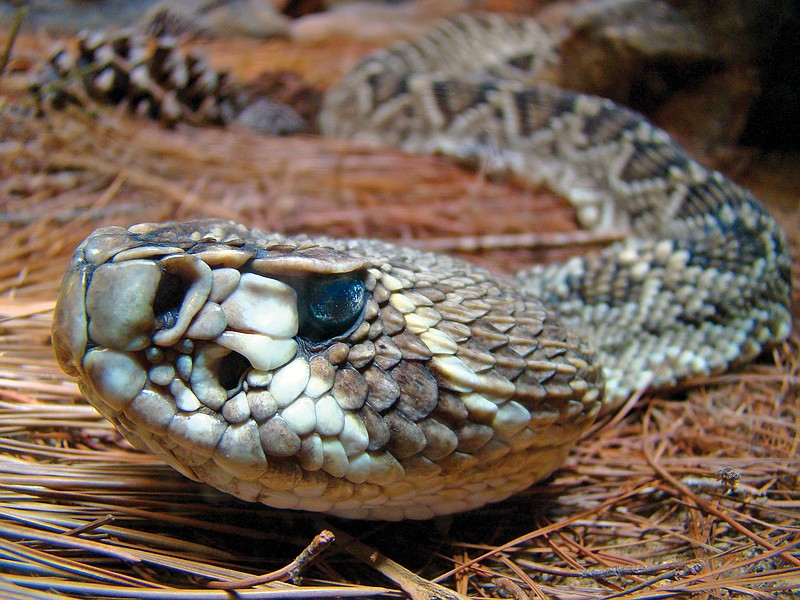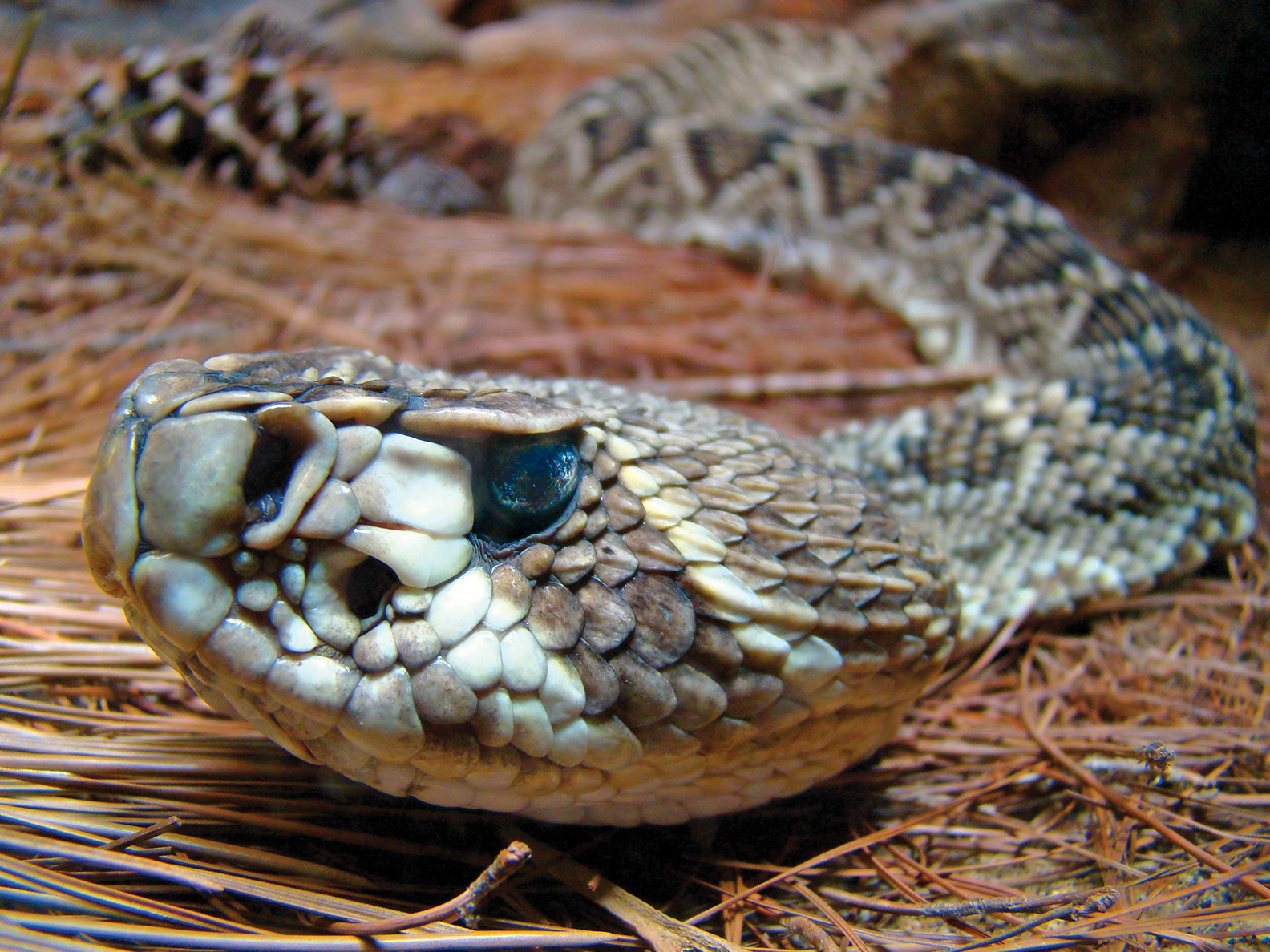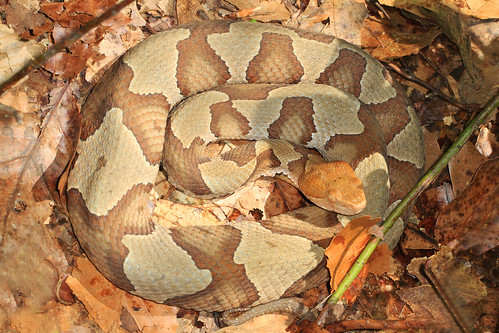East Tennessee is home to several venomous snakes. And while chances are most Chattanooga-area residents won't come across one, wildlife experts say it's important to know the role they play in the ecosystem.
"Many species of wildlife aren't given proper credit for their contributions to the environment," said Scott Dykes, biologist for the Tennessee Wildlife Resources Agency. "Just as bats eat millions of mosquitoes and crop-damaging insects, snakes help keep our rodent populations in check."
The timber rattlesnake and copperhead, both venomous snakes, serve a critical role within the environment. Those snakes consume a variety of small rodents, especially rats and mice. They can even eat other snakes, as well as lizards and birds.
According to state records, human interaction is hurting the reptile's population. That is particularly true for rattlesnakes, whose population is declining statewide thanks to road kills, habitat fragmentation and what Dykes terms "human harassment."
But there are steps the public can take to avoid confrontations with both rattlesnakes and copperheads. That starts, according to Dykes, with knowing where the animals typically live.
Copperheads usually reside in forested habitats and often avoid open areas, such as pastures and fields. Copperheads are most likely to be spotted on a rocky, wooded hillside that has logs and leaves that provide cover. It is possible to see a copperhead in neighborhoods and subdivisions, especially if those areas that are near creeks and streams.
Think you've identified a copperhead? If the snake had a large, triangular-shaped coppery-red head, you might be right.
Rattlesnakes, on the other hand, prefer heavily wooded forests with rocky, south-facing hillsides. Hikers report most rattlesnake encounters on rocky, south-facing hillsides near bluffs or ledges. Rattlesnakes, with the characteristic rattle at the end of the tail, commonly coil near fallen logs or sun on rocks.
"To avoid any species of snake, be mindful of where you put your hands and feet. Snakes are often encountered when picking up debris in overgrown areas, berry picking or cleaning out barns and buildings where snakes have access," Dykes said. "Like any other wild animal, snakes will typically flee when approached by a human. However, snakes are often unintentionally cornered and will defend themselves as a last resort."
Calmly and quickly walk away if you encounter a venomous snake, Dykes advises.
Snake bites aren't common in East Tennessee, but it occasionally happens. In 2018, the Tennessee Poison Center assisted with the care of 226 snakebites.
A Kingsport woman who suffered a bite from a copperhead in 2017 was rushed to a hospital, where she received a dose of anti-venom, according to the Associated Press.
Should you be bitten by either a copperhead or rattlesnake, you will see puncture wounds. If bitten, get to an emergency room as quickly as possible. Let the hospital know you are coming since it takes time to prepare anti-venom.
"Not all facilities carry anti-venom, so this is not a case where one should go to a clinic or family friend," he said. "If the drive is longer than 25 to 30 minutes, and the person has been bitten by a timber rattlesnake, an airlift is recommended."
SNAKE BITES
What to do if you’ve been bitten: › Stay calm. While very painful, snakebites can be treated and are rarely fatal.› Wash the bite gently with soap and water if this won’t delay transport to the hospital.› Remove any jewelry and constricting clothing from the area of the bite.› Keep the arm or leg (usual sites for snakebite) immobile and in a neutral position.› Call Poison Control (1-800-222-1222) right away. The poison specialists and medical/clinical toxicologists on staff are experts in treating snakebites and will work with the physicians in the emergency department so you’ll get the proper treatment.Although there are a variety of folklore practices and commercial products for treating snakebites, evidence shows there is nothing that can be done in the field to significantly alter the outcome of a snakebite, the release states.What not to do:› Don’t risk another bite by trying to capture or kill the snake. If you can take a picture or describe the snake, that is good but not essential for proper treatment. It is also important to know that even a dead snake or decapitated head can still envenomate a person.› Don’t apply a tourniquet. These can lead to ischemia, gangrene, and amputation.› Don’t cut the wound and suck out the venom (either by mouth or with an extractor device). Experimental models show these do not extract any venom and increase local tissue damage. Additionally, oral suction can introduce bacteria into the wound and cause an infection.› Don’t apply ice. This will not slow the spread of venom and can cause significant frostbite.› Don’t attempt to shock the wound with a stun gun or other electrical current. While there are numerous personal testimonials and anecdotal reports (including a few that involve a car and a set of jumper cables), experimental models show no benefit and delayed wound healing.Source: Vanderbilt University Medical Center


